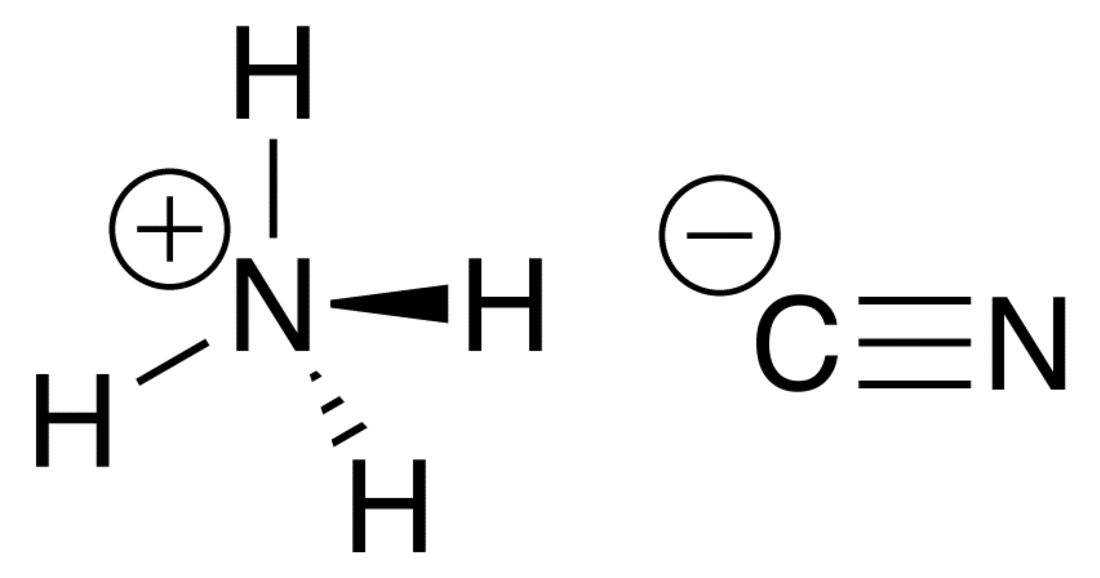Top Qs
Timeline
Chat
Perspective
Ammonium cyanide
Chemical compound From Wikipedia, the free encyclopedia
Remove ads
Ammonium cyanide is an unstable inorganic compound with the chemical formula NH4CN. It is the ammonium salt of hydrogen cyanide. It consists of ammonium cations NH+4 and cyanide anions CN−. Its structural formula is [NH4]+[C≡N]−.
Remove ads
Uses
Ammonium cyanide is generally used in organic synthesis.[citation needed] Being unstable, it is not shipped or sold commercially.
Preparation
Ammonium cyanide is prepared by combining solutions of hydrogen cyanide and ammonia:[citation needed]
- HCN + NH3 → NH4CN
It may be prepared by the reaction of calcium cyanide and ammonium carbonate:[citation needed]
- Ca(CN)2 + (NH4)2CO3 → 2 NH4CN + CaCO3
In dry state, ammonium cyanide is made by heating a mixture of potassium cyanide or potassium ferrocyanide with ammonium chloride and condensing the vapours into ammonium cyanide crystals:[citation needed]
- KCN + NH4Cl → NH4CN + KCl
Remove ads
Reactions
Ammonium cyanide decomposes to ammonia and hydrogen cyanide, often forming a black polymer of hydrogen cyanide:[1]
- NH4CN → NH3 + HCN
It undergoes salt metathesis reaction in solution with a number of metal salts to form metal–cyanide complexes.
Reaction with ketones and aldehydes yield aminonitriles, as in the first step of the Strecker amino acid synthesis:
- NH4CN + (CH3)2CO → (CH3)2C(NH2)CN + H2O
Toxicity
Ammonium cyanide is highly toxic.
Notes
References
Wikiwand - on
Seamless Wikipedia browsing. On steroids.
Remove ads


